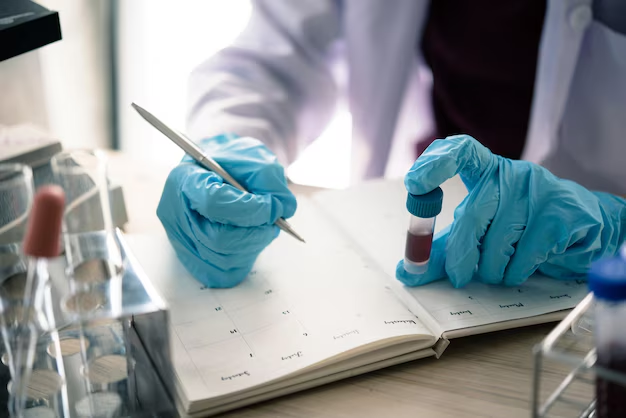Is Malaria a Virus? Here’s What You Need to Know
Imagine planning a dream vacation, backpacking through exotic landscapes and absorbing vibrant cultures, only to be halted by the shivers of fever and nausea. When it comes to tropical diseases, malaria often makes the top of the list of concerns for travelers and residents alike. But, a common question arises: Is malaria a virus? The answer is essential for understanding its transmission, prevention, and treatment. Dive in as we explore malaria's true nature, its effects on the body, and practical steps for staying safe.
Understanding Malaria: The Basics
Before delving into whether malaria is a virus, it's critical to understand what malaria actually is. Malaria is an infectious disease brought to humans by the bite of the female Anopheles mosquito. However, malaria isn’t caused by a virus but by Plasmodium parasites. Yes, that’s right—malaria is caused by parasites, specifically from the Plasmodium genus.
These microscopic parasites enter the bloodstream and wreak havoc on the body, particularly targeting red blood cells. There are several species of Plasmodium that infect humans, with Plasmodium falciparum and Plasmodium vivax being the most prevalent and dangerous.
How Is Malaria Different from Viral Diseases?
Thinking malaria was a viral disease is a common misconception, but let's explore how it fundamentally differs from viral infections:
1. The Cause
- Malaria: Caused by Plasmodium parasites.
- Viral Diseases: Caused by viruses, which are much smaller pathogens and often trigger different immune responses.
2. Transmission Method
- Both malaria and many viral diseases, like dengue fever and Zika, are vector-borne, meaning they are transmitted to humans through bites of infected insects. However, the underlying pathogens are distinct—malaria from parasites and viral diseases from viruses.
3. Symptoms
- While some symptoms such as fever, chills, and body aches can overlap, malaria symptoms include paroxysms (sudden onset of chills followed by fever and sweating) that are cyclic due to the lifecycle of the parasites within the bloodstream.
4. Treatment
- Parasitic Control: Malaria is treatable with specific antimalarial medication, which targets the Plasmodium parasites.
- Viral Management: Viral infections often do not have direct cures and are managed through supportive care unless a specific antiviral exists.
Deep Dive into Plasmodium Parasites
When discussing malaria, it’s important to get acquainted with the foes at play—Plasmodium parasites:
1. Hotspots of Infection
- Malaria is a significant health challenge predominantly in tropical and subtropical regions. Africa carries the highest burden, with Southeast Asia and areas of the Pacific Islands also affected.
2. Lifecycle and Survival Strategy
- The lifecycle involves two main hosts: mosquitoes (the definitive hosts) and humans (the intermediate hosts).
- Within the human body, the parasites first infect liver cells, multiply, and then invade red blood cells, leading to their destruction.
3. Species and Virulence
- P. falciparum: Known for causing the most severe form of malaria and being responsible for most malaria-related deaths.
- P. vivax: Widely spread and capable of causing recurring infections due to dormant liver stages.
Practical Strategies for Malaria Prevention
Avoiding malaria requires a multifaceted approach, especially for travelers headed to endemic regions:
1. Mosquito Avoidance
- Utilize insect repellent, wear long-sleeved clothing, and sleep under insecticide-treated bed nets.
2. Antimalarial Prophylaxis
- Consultation with a healthcare provider for preventive medication is essential before traveling to risk areas.
3. Vector Control Initiatives
- On a broader scale, community-level efforts, such as indoor residual spraying and community education, help reduce Anopheles mosquito populations.
4. Vaccine Development
- Recent advancements in vaccine development, such as the RTS,S vaccine, mark significant progress in malaria prevention, especially for children in high-burden areas.
Symptoms and Diagnostic Measures
Recognizing Malaria
Symptoms can range from mild to severe and typically appear 7-30 days post-infection. Common symptoms include:
- High fevers
- Headache
- Nausea and vomiting
- Muscle aches
In severe cases, malaria can lead to complications like cerebral malaria, anemia, and organ failure, requiring urgent medical attention.
Diagnostic Tools
Effective diagnosis is vital for management and typically involves:
- Microscopic Examination: Giemsa-stained blood smear remains a standard method.
- Rapid Diagnostic Tests (RDTs): These tests detect specific antigens derived from Plasmodium species.
The Global Effort Against Malaria
With nearly half of the world's population at risk, the fight against malaria is a significant global health focus, marked by cooperation between governments, NGOs, and organizations like WHO.
Key Global Initiatives
- Efforts are aimed at increasing access to diagnostic testing and treatment, alongside ambitious goals to eradicate malaria in several regions.
Funding and Research
- Continued investment in research for improved diagnostics, treatments, and vaccines is crucial to sustain progress and address emerging challenges such as drug resistance.
Insightful Realities: The Human Element
The social and economic impacts of malaria cannot be overstated. It often drains household incomes due to treatment costs and lost workdays, perpetuating cycles of poverty in affected communities. Education and awareness campaigns are crucial in empowering basic knowledge about prevention and control efforts.
The journey towards eradicating malaria is complex, yet strides are continually being made. Whether you're a tropical resident, a traveler, or simply an informed global citizen, knowing the facts about malaria can aid in making informed decisions and ultimately contribute to this global health effort.
Takeaway Summary: 🦟
- Malaria is a parasitic disease: Not a virus; caused by Plasmodium parasites.
- Transmission: Predominantly via Anopheles mosquito bites.
- Symptoms: Cyclic fevers, headaches, and chills are key indicators.
- Prevention: Use bed nets, repellents, and prophylactic meds for travel.
- Global efforts: Focus on vaccine development, diagnostics, and eradication strategies.
- Social impact: Affects economies and livelihoods, particularly in tropical regions.
Understanding the nature of malaria builds not only awareness but also bridges toward a healthier world. By maintaining vigilance in preventive strategies, treating the disease promptly, and supporting eradication efforts, each individual can play a part in battling this enduring global health challenge. 🌍✨
